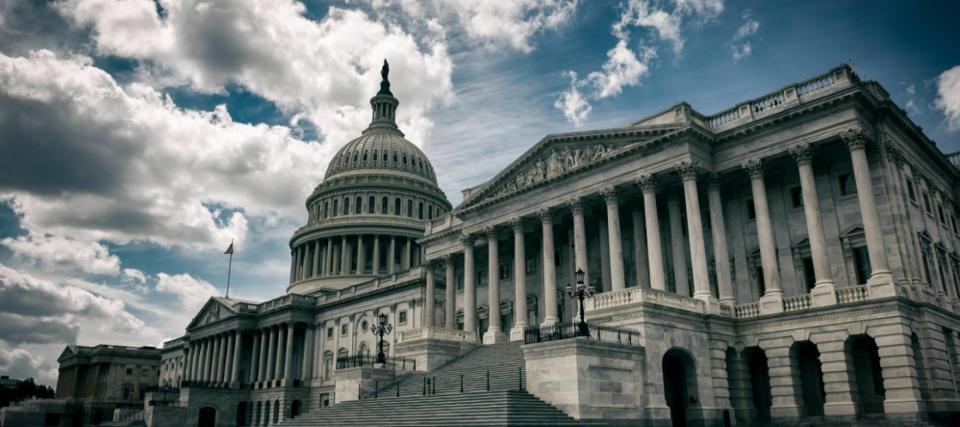The US budget deficit hit a staggering $1.1 trillion for the first half of 2023 — is America on the brink of collapse? (And what should you do about it?)

If you thought that America’s financial picture was concerning, it only seems to be getting more worrisome.
The Congressional Budget Office estimates that the U.S. federal budget deficit ballooned to $1.1 trillion over the first half of the 2023 fiscal year. That’s an increase of $430 billion from the same period in 2022.
Don't miss
Rich young Americans have lost confidence in the stock market — and are betting on these 3 assets instead. Get in now for strong long-term tailwinds
Here's how much money the average middle-class American household makes — how do you stack up?
You could be the landlord of Walmart, Whole Foods and CVS (and collect fat grocery store-anchored income on a quarterly basis)
Government spending increased by 13% in the past six months, while revenues fell by 3%. Contributing factors included an 11% bump in mandatory spending programs — like Social Security and Medicare — and a 41% spike in interest outlays on public debt.
With the nation facing higher interest rates, the deficit could continue to balloon as the government works to pay it off. The U.S. Government Accountability Office projects that national debt will continue to grow faster than the economy. And that could lead to serious economic, security and social challenges.
Here are some ways you can protect yourself from potential economic instability.
Prepare for reduced benefits
Social Security and Medicare are major components of the federal budget.
But if the federal deficit continues to grow, it's possible that policymakers may consider reducing benefits or making other changes to the programs. The Social Security Trust Fund is projected to be depleted by 2034, which could lead to a 24% reduction in benefits if no action is taken to address the shortfall.
To soften the blow of any future benefit cuts, individuals can contribute more to their retirement savings now. This includes options such as increasing contributions to a 401(k) or IRA. By doing so, individuals can build a larger retirement nest egg that can provide an additional source of income in retirement.
Opening a Health Savings Account (HSA) can also provide a financial cushion for future medical expenses. HSAs are tax-advantaged accounts that let individuals save pre-tax dollars to pay for qualified medical expenses. Any unused funds in the account roll over from year to year and can continue to grow tax-free, providing a potential source of funds for future medical expenses.
Prepare for higher interest rates
Paying down debt can be a smart financial decision, especially during times of economic uncertainty. Studies have shown that reducing personal debt can help to minimize financial risk and increase financial stability.
One study by the National Bureau of Economic Research found that households with higher levels of debt are more likely to experience financial distress during times of economic hardship.
By paying off debt, you can free up their monthly expenses and have more disposable income to invest in their retirement plans or emergency funds. This can provide a safety net during times of financial uncertainty.
Make sure to prioritize high-interest debt first. They can become even more burdensome if interest rates rise. Refinancing loans at lower rates or consolidating debts can also help to make payment schedules more manageable.
Look to alternative investments
Diversifying your investments can be an effective strategy to mitigate risks in case of a potential financial crisis. By investing in different types of assets, you spread out your risk and reduce the impact of market volatility.
Gold, for example, is a classic way to diversify your investments, as it is not necessarily tied to stock market movements. Its physical form and finite supply make it a valuable asset that can be held outside of the banking system. This provides a buffer against inflation, making it a popular choice for investors who are seeking to hedge market turmoil.
Real estate is another popular alternative investment that is seen as relatively recession-proof. It has historically provided healthy appreciation in value, whether you invest in commercial real estate, residential properties, or a primary residence.
Prime commercial real estate, in particular, has outperformed the S&P 500 over a 25-year period, making it an attractive option for investors seeking stable returns.
What to read next
Americans are paying nearly 40% more on home insurance compared to 12 years ago — here's how to spend less on peace of mind
UBS says 61% of millionaire collectors allocate up to 30% of their overall portfolio to this exclusive asset class
Earn extra cash for your weekend with these quick money hacks
This article provides information only and should not be construed as advice. It is provided without warranty of any kind.
